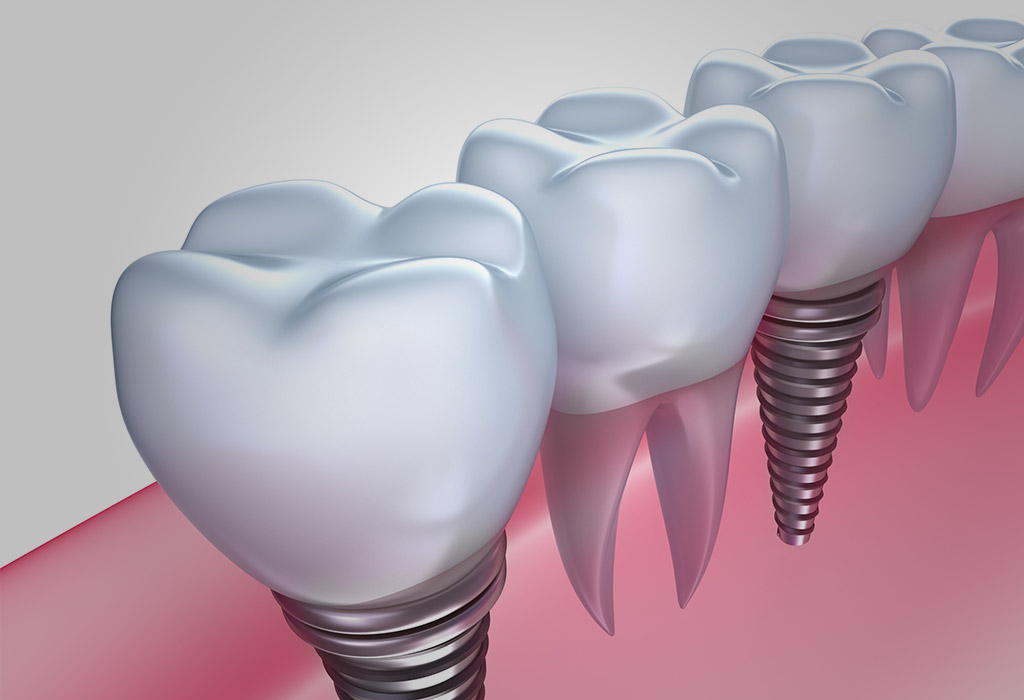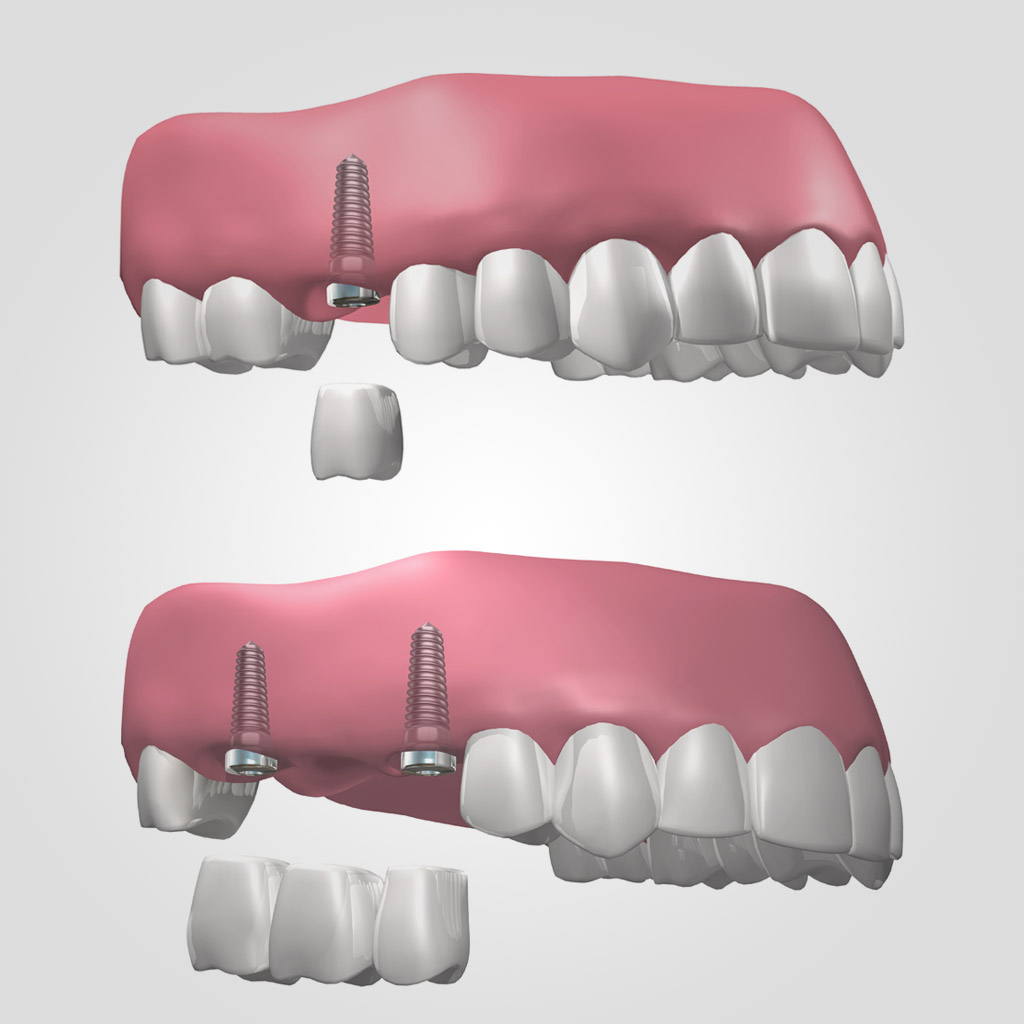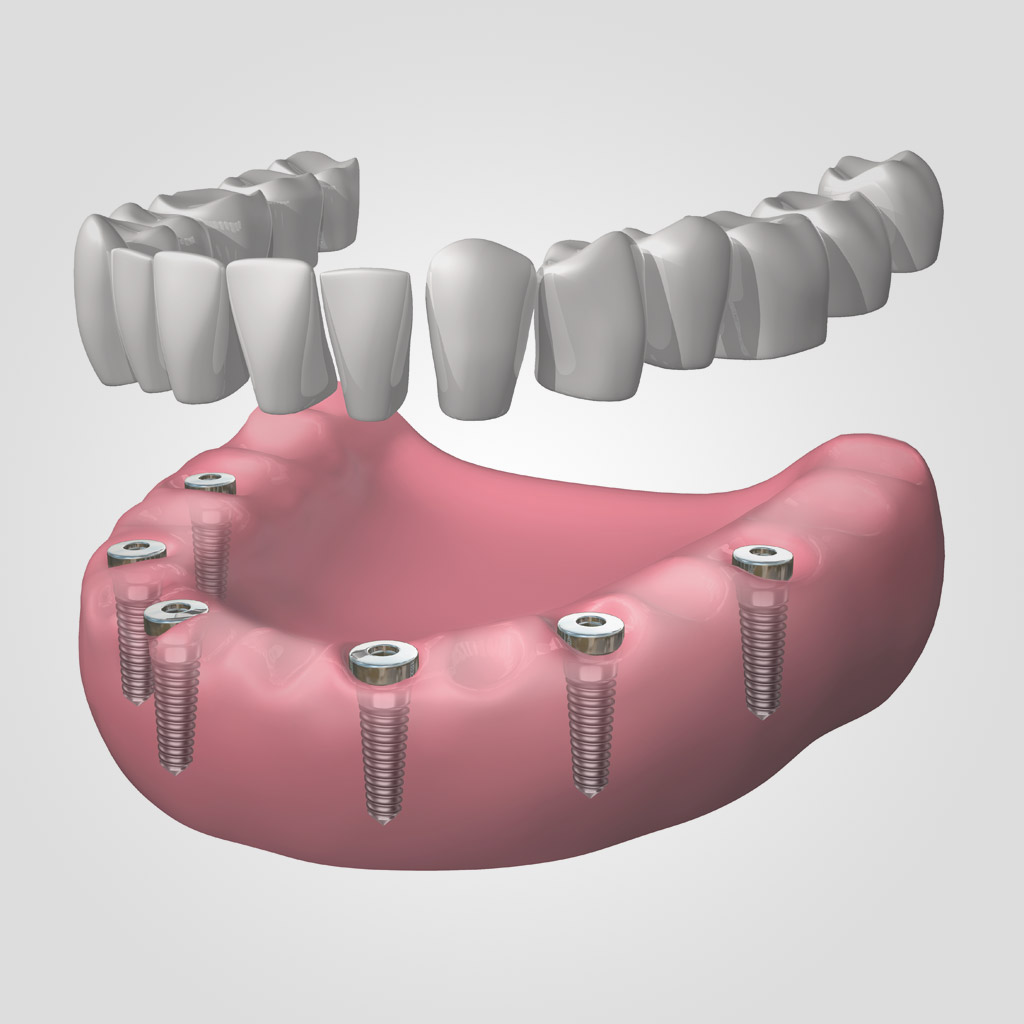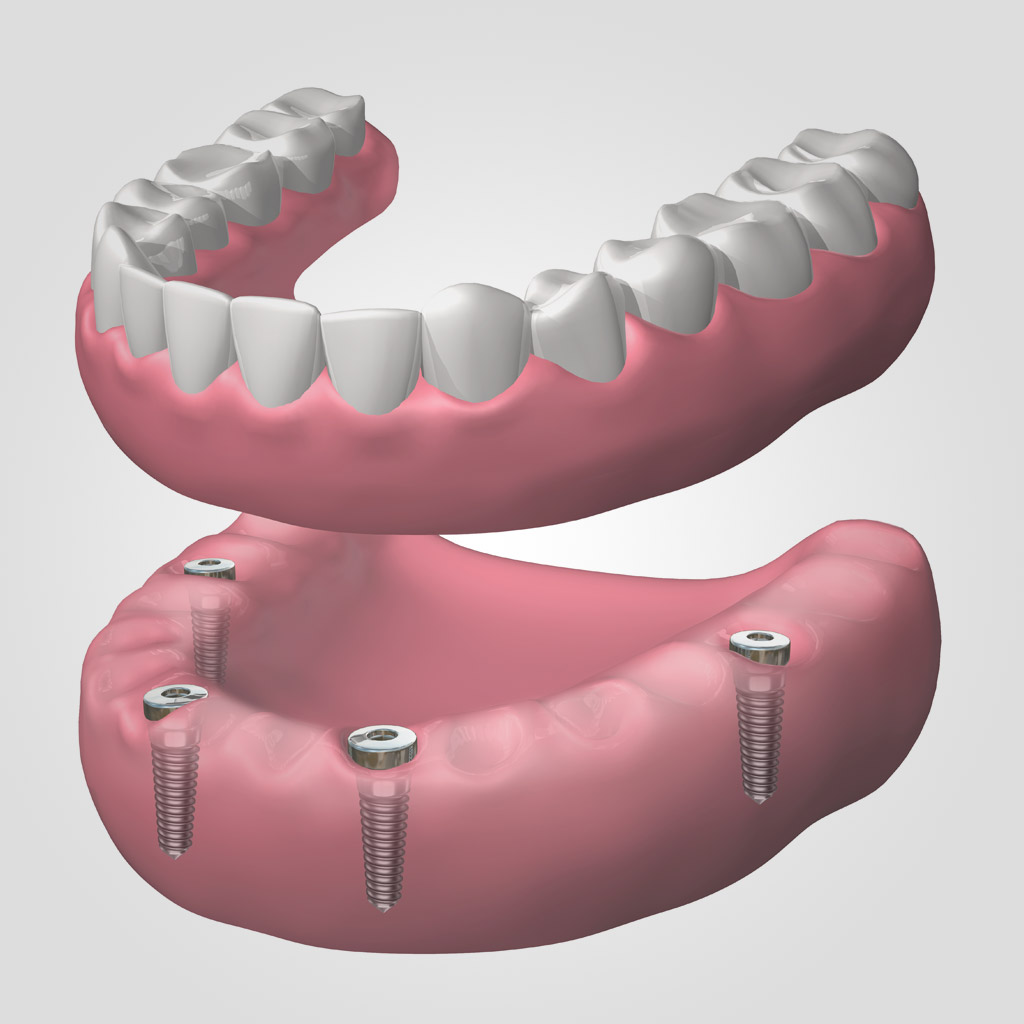Treatments
Dental implants


It is a medical device intended to be an artificial replacement for the root of a missing tooth. It has a threaded shape and is made of biocompatible materials that do not produce a rejection reaction and allow it to bond with the bone.
Replacing missing teeth with implants preserves a greater amount of bone, as it reabsorbs without any stimulation, preventing jawbone loss.
Components
- Body. Portion of the dental implant that is designed to be inserted into the bone to anchor the prosthetic components, usually screw-like.
- Cover screw. After inserting the implant body into the bone during the first surgical stage, a cover is placed over the ridge module in order to prevent tissue growth inside the thread.
- Healing abutment. After osseointegration has occurred, a second surgical step is performed, the cover screw is unscrewed and removed and the healing abutment is screwed in.
- Pilar. It is the portion of the implant that holds the prosthesis.
Materials
Titanium
It is the most commonly used material for implants due to its high chemical stability and good biocompatibility. It withstands high occlusal loads and allows for osseointegration of the implant.
Ceramic materials
There are implants made entirely of ceramic materials, zirconium implants. They have great potential for use in modern dentistry.
They allow for faster and stronger integration than that produced with titanium, since the bond is supposedly chemical rather than mechanical, resulting in biointegration.
Individual
implants

Fixed prosthesis with 6 implants

Removable prosthesis with 4 implants

Hybrid prosthesis with 4 implants



